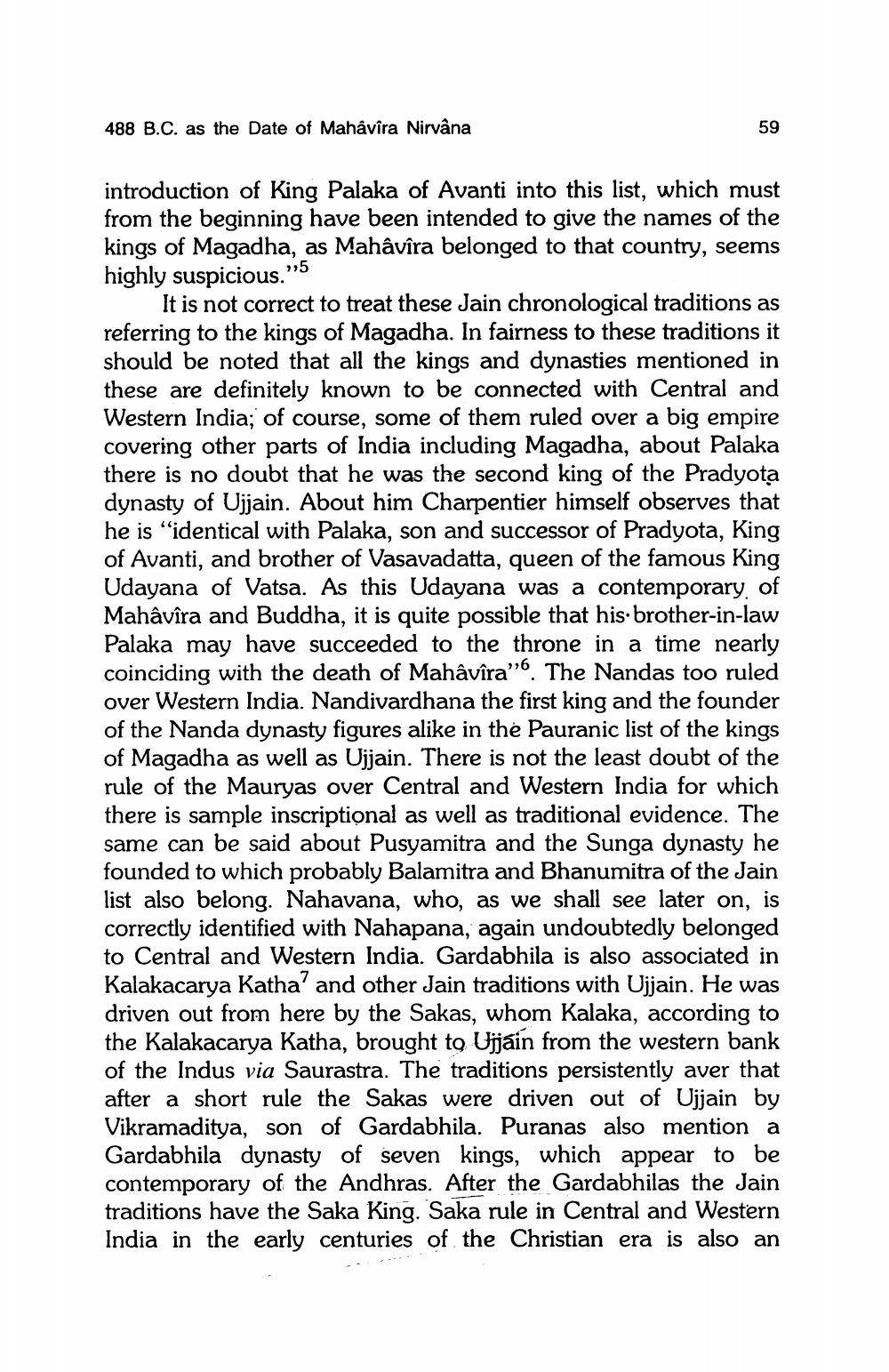________________
488 B.C. as the Date of Mahâvîra Nirvâna
59
introduction of King Palaka of Avanti into this list, which must from the beginning have been intended to give the names of the kings of Magadha, as Mahâvîra belonged to that country, seems highly suspicious.'
"15
It is not correct to treat these Jain chronological traditions as referring to the kings of Magadha. In fairness to these traditions it should be noted that all the kings and dynasties mentioned in these are definitely known to be connected with Central and Western India; of course, some of them ruled over a big empire covering other parts of India including Magadha, about Palaka there is no doubt that he was the second king of the Pradyota dynasty of Ujjain. About him Charpentier himself observes that he is "identical with Palaka, son and successor of Pradyota, King of Avanti, and brother of Vasavadatta, queen of the famous King Udayana of Vatsa. As this Udayana was a contemporary of Mahâvîra and Buddha, it is quite possible that his brother-in-law Palaka may have succeeded to the throne in a time nearly coinciding with the death of Mahâvîra". The Nandas too ruled over Western India. Nandivardhana the first king and the founder of the Nanda dynasty figures alike in the Pauranic list of the kings of Magadha as well as Ujjain. There is not the least doubt of the rule of the Mauryas over Central and Western India for which there is sample inscriptional as well as traditional evidence. The same can be said about Pusyamitra and the Sunga dynasty he founded to which probably Balamitra and Bhanumitra of the Jain list also belong. Nahavana, who, as we shall see later on, is correctly identified with Nahapana, again undoubtedly belonged to Central and Western India. Gardabhila is also associated in
Kalakacarya Katha and other Jain traditions with Ujjain. He was driven out from here by the Sakas, whom Kalaka, according to the Kalakacarya Katha, brought to Ujjain from the western bank of the Indus via Saurastra. The traditions persistently aver that after a short rule the Sakas were driven out of Ujjain by Vikramaditya, son of Gardabhila. Puranas also mention a Gardabhila dynasty of seven kings, which appear to be contemporary of the Andhras. After the Gardabhilas the Jain traditions have the Saka King. Saka rule in Central and Western India in the early centuries of the Christian era is also an




